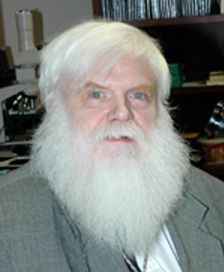Lifetime Achievement Award 2007

2007 API Lifetime Achievement Award
G. William Moore, MD, PhD
Dr. Moore was born in Detroit, MI, in 1945. He earned a B.S. degree majoring in Cell Biology at the University of Michigan at Ann Arbor, MI; a Ph.D. in Biomathematics from North Carolina State University at Raleigh, Raleigh, NC; and an M.D. from Wayne State University, Detroit, MI. He completed his anatomic pathology residency at The Johns Hopkins Medical Institutions, Baltimore, MD.
Dr. Moore continued as Assistant Professor of Pathology at Johns Hopkins after his residency, and he eventually became a Staff Pathologist at the Baltimore Veterans Affairs Medical Center, where he now holds joint appointments in the Departments of Pathology at the Johns Hopkins Medical Institutions and at the University of Maryland Medical System, Baltimore, MD.
During his career, Dr. Moore has been a co-author on over 180 refereed papers, most of which relate, in one way or another to computational pathology and pathology informatics. His earliest work was in the field of computational evolutionary biology, and he was one of the first people to create mathematical proofs and write computer programs to generate cladograms (for automated cladistic classification of species). His early work also involved developing statistical techniques for analyzing medical data, and his "token swap" paper is probably his best contribution in this area. [Moore GW, Hutchins GM, Miller RE. Token swap test of significance for serial medical data bases. Am J Med. 1986 Feb;80(2):182-190.]
The Johns Hopkins Department of Pathology was smart enough to adapt the MUMPS-based VistA Fileman architecture for their Laboratory Information System, and Dr. Moore became a fluent MUMPS programmer. He transferred his MUMPS expertise to his new position at Veterans Affairs, where he serves as a liaison between the pathology department and the Laboratory Information System staff.
Dr. Moore has been a long-time advocate for using pathology data in research. Along with Grover Hutchins, MD, he was awarded an NLM grant, and transferred over 53,000 Johns Hopkins autopsy reports into a database. These autopsy records and associated blocks have been used for over 1300 published research projects at The Johns Hopkins Medical Institutions.
Jules J. Berman, PhD, MD, used Dr. Moore's autopsy database for a project that primarily involved Dr. Berman, Dr. Moore, and Rebecca Thomas, MD. The database helped to retrieve cases of liver dysplasia cases, and to locate the paraffin blocks. The blocks were used to demonstrate the presence of aneuploidy in the dysplastic foci. The database and retrieval process worked like a charm. It wasn't until years later, when, as Program Director for the Pathology Informatics Section of the National Cancer Institute (NCI), Dr. Berman got involved in organizing tissue repositories, that he realized how impressive this achievement was. For this same project, Dr. Moore developed his own methods for extracting flow data (from the EPICS computer), and then for analyzing the data. [Thomas RM, Berman JJ, Yetter, RA, Moore GW, Hutchins GM. Liver cell dysplasia: a DNA aneuploid lesion with distinct morphologic features. Hum Pathol. 1992 May;23(5):496-503.]
Drs. Berman and Moore also worked on a very early image analysis program, all written in Visual Basic. Dr. Moore did most of the programming on that project. [Berman JJ, Moore GW. Image analysis software for the detection of preneoplastic and early neoplastic lesions. Cancer Lett. 1994 Mar 15;77(2-3):103-109.] The source and object code for this image analysis program is posted for free downloading at the Johns Hopkins Medical Institutions website.
Over the past 20 years, Dr. Moore has concentrated on the two related fields of indexing and machine translation. He has contributed many papers to the field, and has shown the utility of MESH and UMLS as primary indexing dictionaries. His barrier word method for extracting candidate terms from text (now better known as the stop word method) was the first published description of this now powerful and widely-used technique.
|

